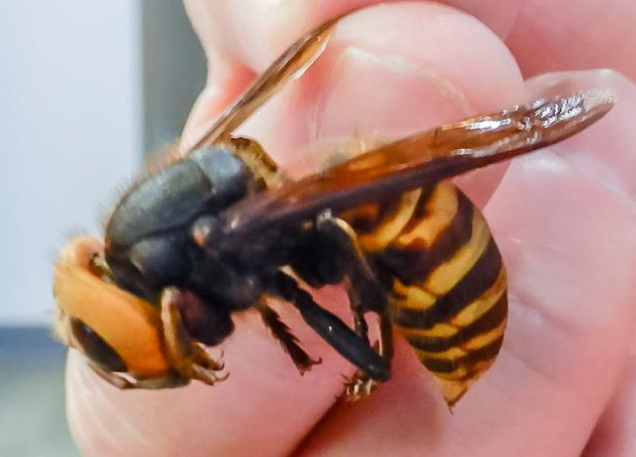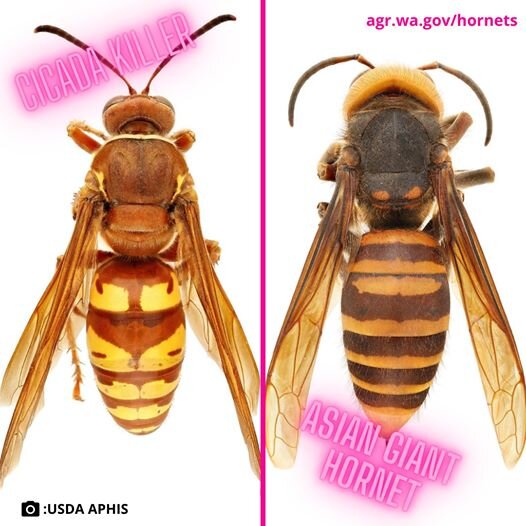THE EUROPEAN GYPSY MOTH
Lymantria dispar, is one of North America's most significant and devastating forest pests. Introduced into North America in the late 1860s in Massachusetts, the European gypsy moth is now a well-documented forest canopy and nuisance pest in its introduced range. Its host range exceeds 300 species of deciduous and coniferous trees and shrubs. At high populations, gypsy moths can completely defoliate trees, leading to whole tree mortality coupled with other stressors such as drought and other insects.
Gypsy moths overwinter in tan-colored egg masses located on the bark of trees, leaves, or other nearby objects. Eggs hatch the following spring. Young caterpillars are dark, fuzzy, and lack obvious markings. Eventually, blue and red spots become more visible on their backs. Gypsy moth caterpillars spend most of their life consuming the leaves (or needles) of their host trees. Defoliation continues and is followed by pupation. Moths emerge to mate and lay eggs. The flightless white female moths emit pheromones to attract the brown, flying male moths. Gypsy moths have one generation per year.
THE ASIAN GYPSY MOTH
Lymantria dispar asiatica, a subspecies of the European gypsy moth. Similar in most ways, the Asian gypsy moth comes equipped with two additional weapons under its belt: 1) a much broader host range (more than 500 trees and shrubs), and 2) the female moth’s ability to fly, enabling populations to expand quicker and farther than the European gypsy moth.
In 2015 the Oregon Department of Agriculture (ODA) and other state and federal cooperators caught two Asian gypsy moths and 12 European gypsy moths statewide. The two Asian gypsy moths were caught near the Port of Portland Terminal 4 area in St. Johns and across the Willamette River in the adjacent Forest Park. Of the 12 European gypsy moths, five were caught in or near Portland Metro/Tri-county area (three in Northwest Portland, one in Forest Grove and one in West Linn). The other seven European gypsy moths were caught in northwest Grants Pass where ODA had been catching gypsy moths in 2014 (four moths) and 2013 (two moths).
USDA convened a Technical Working Group in October 2015 to discuss the Asian gypsy moth catch situations in Oregon and Washington. An Asian and European gypsy moth eradication plan are being developed for the Northwest Portland area in 2016. It is proposed that about 8,000 acres would be treated with an aerial application of a biological pesticide Bacillus thuringiensis kurstaki in the spring of 2016 to eradicate the Asian and European gypsy moth infestation. Delimitation traps will be placed in 2016 to monitor the success of the eradication and to pinpoint any remaining populations.
WHY SHOULD WE CARE?
Because we’ll lose a lot trees. Gypsy moth caterpillars have little discretion. As previously mentioned, their host range is great, and they can completely defoliate trees. In a year with sufficient precipitation, deciduous trees that have been defoliated can flush out a new set leaves that season. As outstanding as this sounds, and although a testament to these trees’ apparent health, flushing out a new set of leaves stresses a tree. Forced to undergo this stress for more than one year, trees become weak and prone to other insects and diseases. Gypsy moth can also defoliate coniferous trees such as Douglas fir and hemlock (both dominant species on Forest Park). Unlike deciduous trees, coniferous trees cannot flush out a new set of needles in that same year and are therefore not able to “bounce back” after an attack.
IN SUMMARY, THIS IS WHAT LIVING WITH GYPSY MOTH IN THE PACIFIC NORTHWEST WOULD LOOK LIKE:
Cyclic defoliation of the trees in Forest Park and surrounding areas, resulting in increased water temperatures and increased organic material in the streams, which will impact native aquatic species.
Deteriorating forest health conditions coupled with stress caused by drought, resulting in increased tree mortality and the subsequent risk of forest fires.
Long-term increase in pesticide use due to suppression projects and quarantine regulatory treatments.
Loss of markets and increased production costs to a variety natural resource and agricultural production economies.
Increased exposure of migrant agricultural workers to insecticides.
Overall decrease in quality of life for residents and visitors in and or near forests. Based upon three decades of high density trapping data we know that gypsy moth is not established in Oregon. Furthermore, ODA has decades of experience conducting early detection and rapid response, which has resulted in safe and effective eradication of this pest.








